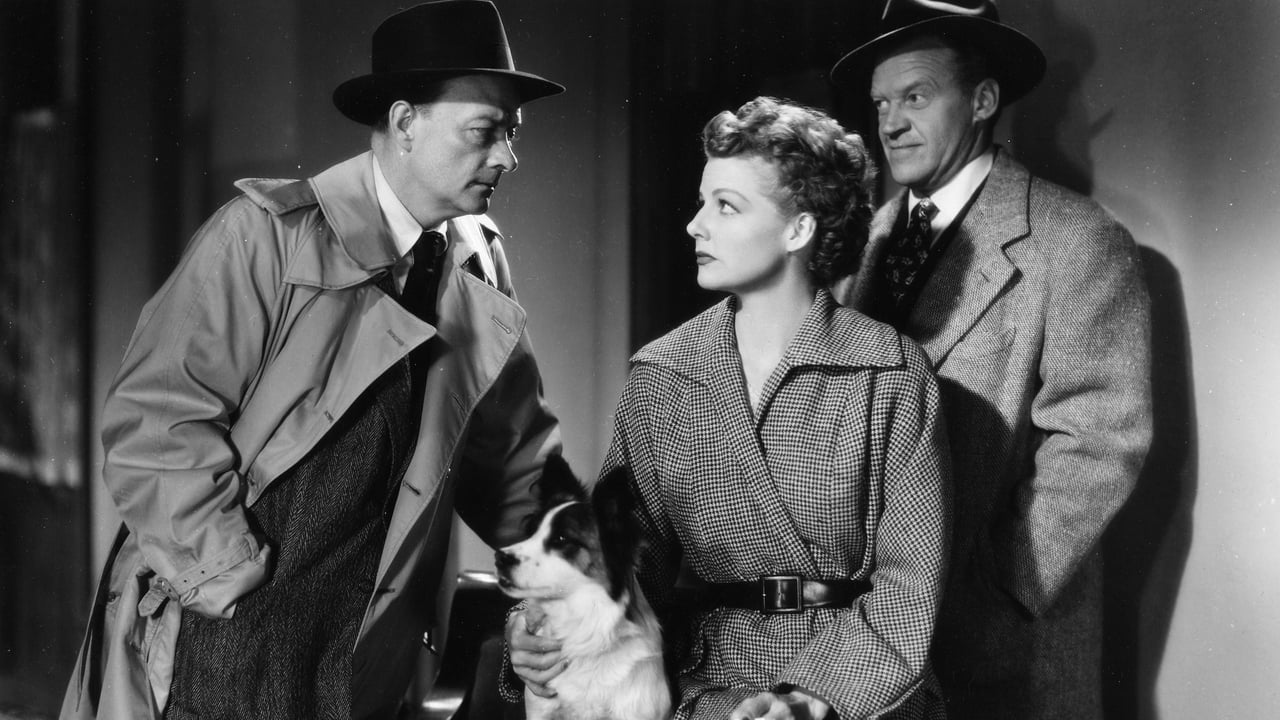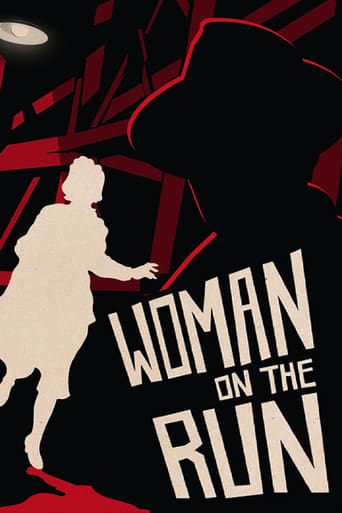

The best thing Ann Sheridan ever did; and she made a lot of films. Nice dialogue by Ross Hunter and wonderful finale. Reminded me of Ride the Pink Horse and The Third Man. Rest of the cast, particularly the police chief, are very good. Very tight screenplay, and a great twist. It is safe to say they seldom make them as good as this anymore. Don't miss it..
... View MoreAs another user here said, seeing that this film was in the public domain for anyone to sell or distribute made me assume that perhaps it would be a film that wasn't even seen as worthy of the cost of the stamp to renew the copyright. I was pleasantly surprised to see that actually, while not brilliant, it was actually quite enjoyable in how it moved. The plot sees a normal guy (Frank) out for a walk when he witnesses a murder and, although shot at himself, he is not hit. The police interview him as a witness but it quickly becomes clear to Frank that he was very lucky not to be killed himself and will clearly be a target again. As a result he goes missing and soon his wife (Eleanor) is looking for him, believing that he is actually running away from their difficult relationship. With journalist Danny Leggett alongside her looking for a scoop, she sets off to find him herself.The story unfolds as a reasonably engaging thriller with solid development. I enjoyed the relationship between Leggett and Eleanor as it skirts on the sort of playfulness that you tend to get with male/female partnerships in these sort of films but yet at the same time as more going on as Eleanor is open about her relationship. As others have said here, there is a twist at the end and it probably works much better if you don't know it is coming, because if you do then you are pretty much looking for it (which is why I think telling people there is a twist is a sort of spoiler in and of itself). Anyway, it is not too hard to guess but it is still quite nice when it comes.Although the film opens with Elliott, he is absent from most of the film and never really made an impact on me. Sheridan is great though with her turn and she works very well with O'Keefe. The direction from Foster is good at making an atmosphere without overdoing it in the process. Generally the film delivers well and has a nice tough edge mixed with playfulness which teases the viewer in quite a satisfying way.
... View MoreThis is a noirish suspense film directed by Norman Foster, previously noted for JURNEY INTO FEAR (1943, with script by Orson Welles), and who had done numerous Mr. Moto and Charlie Chan films. The direction is very good, and it is a pity that Foster never made it to the big leagues but spent most of the latter part of his career directing for television, including 14 episodes of Zorro. This film features B stars Ann Sheridan and Dennis O'Keefe. Ann Sheridan was only 35 at the time this film was made, but she looked older and seemed very tired and lacking in spirit. Perhaps she was already ill, because she was later to die aged only 51, having made 96 films, which is enough to make anybody weary, I suppose. Earlier in her career she had been a sultry hot number who was known as the 'Oooomph girl' because she had the 'oooomph'. (That is obsolete forties slang for sex appeal.) In this film Dennis O'Keefe does not play a square-jawed upright detective as he often did, but a man posing as a journalist who is really a vicious killer. One weakness in the story line is that the police do not seem to realize that he is not a real a journalist, which is ridiculous, considering how active he is in chasing the case they are investigating and that they must have been familiar with all real journalists covering crime stories. The film was shot on location in San Francisco, so that there are many interesting shots of San Francisco as it was in 1950. The film has a dramatic opening. Sheridan's husband (played by Ross Elliott, who appeared in an amazing 243 film roles in his lifetime, dying at 82 in 1999) is walking his dog at night, having climbed up some high steps in the semi-darkness, and above him he sees a car drive up and park. The driver of the car shoots his passenger dead and dumps his body. The husband sees the killer's face and, being an artist by profession, is able to draw it and identify the man. The killer sees him and shoots at him, trying to kill the only witness of the murder. But he aims at the shadow rather than the man himself, so misses. The husband then disappears, leaving his wife (Sheridan) exposed to danger, hence O'Keefe befriends her and helps her to try to find her husband, who is in hiding. She naturally does not know that this apparently helpful and rather glamorous man, whom she prefers to the abrasive and irritating police officers, is really trying to find her husband so that he can kill him. She is thus unwittingly leading a killer to her own husband, and in the process is heedlessly disregarding all the wise cautions of the police. It makes for an exciting story, and there are several dramatic scenes, such as shots from a roller coaster at an amusement park. At one point, Sheridan is trapped on a car riding the roller coaster while below her she can see O'Keefe approaching her husband, and she has just realized that he intends to kill him. She screams warnings which no one can hear. This is all very dramatic stuff and well done. Although this is a B film, it is a superior one, and let's face it, some of us like B films, don't we?
... View MoreI no longer know what makes a film "noir". I mean, it can't be simply a black-and-white detective movie or murder mystery with lots of shadows and a duplicitous woman, because then we're talking Charlie Chan. Literally, "noir" means black or, sometimes, "dark." The French broadened the meaning of "noir" to include American movies with an oppressive atmosphere, odd camera angles, and weird lighting set ups. I guess, if we stretch the semantics a little more, "Woman On The Run" may be called a "noir," though not a "noir d'ebene." I'd add the accents but can't find them.Okay, boys and girls, this is the story of an innocent but rather dumb man, Ross Elliott, who witnesses a murder in San Francisco. The murderer, whom we've heard called "Danny Boy", has witnessed the witness and takes a few shots at him. Elliott calls the cops who want to put him in protective custody. The idea doesn't appeal to Elliott. He takes a powder and we don't see him again until the end of the movie.The cops want Elliott badly. As it turns out, they want him rather more than his wife, Ann Sheridan. They're married but distant from one another. Sheridan doesn't even know he has a serious heart condition. When she finds out, she sets about trying to track Elliott down in the city in order to bring him the medicine he needs. She's accompanied by Dennis O'Keefe, a reporter for a tabloid newspaper who wants the story. And she's pursued by the police, who expect her to lead them to Elliott.It's her investigation of her husband's activities, of which she seems largely ignorant, that lifts this story above the routine. Sheridan visits Elliott's place of work, his bar, and so forth, and bit by bit realizes that her husband loves her, that he's too reserved to throw himself at her, and that she herself has been a demanding wife and a cold fish. Without that element of discovery, it's a more ordinary murder mystery shot on a modest budget.Nobody thinks of director Norman Foster as an "auteur" -- here come the French again -- but he does a good, craftsmanlike job here. The performances are okay. No one stands out. Everyone is reliable. There is a young Japanese girl who plays a Chinese dancer and she's quite memorable although she has only a few lines before she's thrown off a balcony. The guy who tosses her -- a guy we know but we don't know we know, y'know? -- ought to be brutally spanked. Instead he just winds up floating in the bay with a bullet in him.The climax is very well done for its type. The killer stalks Elliott among the cross-crossing shadows under a roller coaster while Sheridan, who has just learned the murderer's identity, tries to shout a warning from the rocketing amusement park ride.The filming locations put that amusement park in Carmel, but it can't be the Carmel that now exists. Nobody in Carmel would allow a roller coaster to perturb the tranquil artistry of the place. I suspect the real location was in Santa Cruz. The midway we see looks a lot like the place where back-lighted Dirty Harry fondled his .357 automag and muttered "Make my day".It's interesting to see the city's locations in 1950. Some have evolved, some not. I expect most of the indoor scenes were shot at Universal Studios. The outdoor scenes lack dialog except that which was dubbed in later. Yet, the city itself is pleasing to look at, on screen or in life. It's the most Mediterranean-looking city in the US because of the pastel houses and the multiple elevations. Everywhere you look, the earth is tossed and tumbled into mountains and hills. The rooftops are magnificent places to stage foot chases on, not to mention the views.
... View More